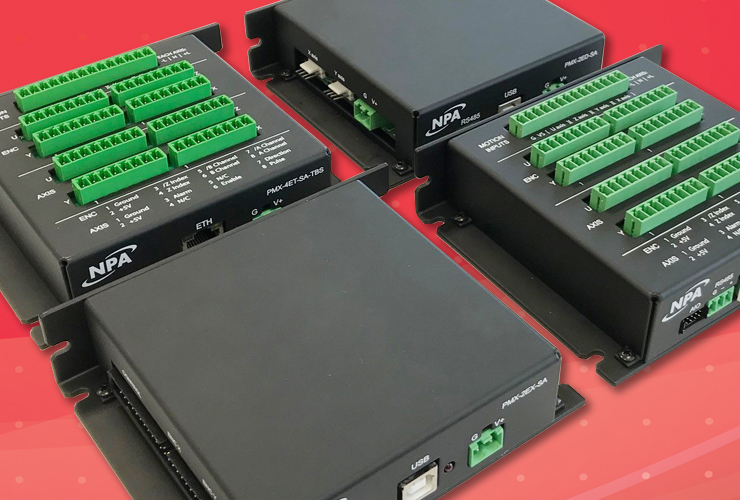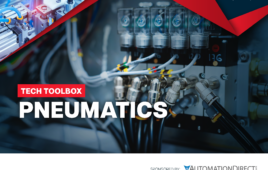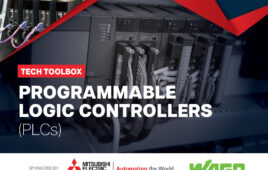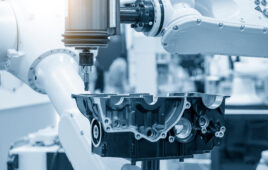
Sponsored content by Nippon Pulse
In automation there are many things to consider during the design phase: there are mechanical criteria that can dominate the design approach, as the forces and motion profiles are at the forefront of what drives the outcome of automation. The motion control electronics also need to be considered at the start of the design process. When controls and mechanics are well-integrated, the result is a robust machine that performs well at a reasonable cost.
There are a vast array of control products available, and they can be grouped by how much development effort is required to produce a fully functioning control system: design based on an FPGA using an ASIC motion control chip, board level controllers, and box level controllers.
Starting with a chip-level design requires the greatest amount of development effort, as the overall circuit design needs to be created, parts sourced, PCB designed and manufactured, firmware and interface code written and proofed, and product testing completed. While starting with a blank FPGA requires huge amounts of programming and troubleshooting time, using an ASIC motion control chip designed precisely for control of a motion system can reduce a lot of risk and development time.
Board and box level controllers significantly reduce the development time, as the basic structure of the control system has been developed and proven, but the downside for these controllers is that the performance and features are harder to change or customize.
This whitepaper will cover what factors to consider when selecting a servo motion controller.
Define the # of axes:
How many motors will be in the system and will they need to be coordinated in their movement? Each motor that is going to be electronically controlled will be defined as an axis. (If three motors are used to move three linear slides that are all orthogonal, this would define a Cartesian space and is a common approach for 3-axis systems such as milling machines. When a fourth motor is added to the Cartesian space, typically rotational, this would create a 4-axis machining center.)
Define the motion set:
What type of movement is required? There are two types of coordination between motors: linear and circular interpolation. Linear interpolation is when two or more motors are moved in conjunction in a linear fashion; the movement would describe a line between the two motors. Circular interpolation moves the motors in a non-linear fashion. The basic shapes that can be created with linear, circular and linear/circular interpolation movements are shown in Figure 1.

If the motors move independently of each other, any combination of motor controllers could be used. For example, if there are four motors in a machine, four 1-axis controllers could be used, as long as there is a mechanism or communication between controllers to ensure the motors perform their tasks at the appropriate times. Or, it might make sense to use a multi-axis controller instead.
Linear-coordinated axes
If a machine needs to coordinate two or more motors, the controller needs to have an interpolation function so the relative movement of each motor is referenced to the other motors in the interpolation group.
Linear interpolation is generally simple to program, as the controller does the calculations. By specifying the end target position for all involved motors, the controller will take that information and will calculate and adjust the output pulses as the movement is executed, so each axis reaches its position at the same time.
Circular-coordinated axes
The ability to move two motors with a circular movement relationship allows for the generation of contours, or for a motor to speed up and slow down relative to other motors in the interpolation group.
However, motion in only a linear or circular pattern limits the shapes that are possible. It gets more interesting when you combine the two interpolation types for linear/circular interpolation, which opens up the ability to produce almost any three-dimensional shape or do highly intricate or complicated engravings and etchings.
Other considerations:
The output control capability, how the I/O is configured, and what the programming/control set looks like are other things to consider when choosing a controller. These can range from no flexibility and little capability to a lot of flexibility and capability.
Output control:
Do you need position- or velocity-controlled motion? How fast do you need to be able to move, and at what resolution? The answers to these questions will determine if you need encoder feedback, and will determine the requirements for the controller’s output pulse frequency and the encoder input frequency. Typically, the output pulse is equivalent to the movement of an encoder pulse.
I/O configuration:
A motion system usually needs to have inputs other than an encoder and outputs other than pulse and direction to a motor driver. Additional inputs give the controller other safety-related information such as where the motor is in space through the use of end limit switches and home switches. When these are triggered, the controller can ensure that certain actions are completed before follow-up actions are executed.
Typically, the outputs are digital with on/off states. These can send signals that are used to synchronize actions between multiple controllers.
Programming/control set:
How you communicate with the controller and what you can tell it to do is just as important as the inherent capabilities of the system’s hardware design. A useful controller will have the ability to receive commands from an external user-written program and an onboard program/interface, which will allow for testing functions and can run on its own if necessary. Controlling through an external program will allow for incorporation of external data into the motion control process, and the program can process and analyze the data for use as an input to determine the next set of motions needed. If this level of sophistication isn’t needed, an onboard control with programming capability may alleviate the need to develop a user interface.
Choosing a controller:
With these factors and requirements in mind, you should have an easier time determining your controller needs, especially whether your application would best benefit from the use of controller chips (with all the benefit of design-from-scratch programming capabilities) or a more turnkey all-in-one solution with fewer opportunities for customization, such as a box controller. Contact Nippon Pulse to discuss controller possibilities for your motion control application.
Sponsored content by Nippon Pulse
Filed Under: SPONSORED CONTENT




